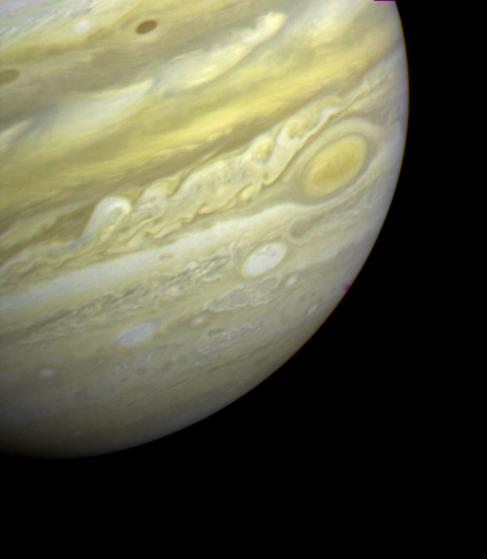It’s hard to explain what the atmosphere of Jupiter is, since the planet is 90% hydrogen and 10% helium. Here on Earth, we’d consider those gasses all atmosphere. But under its strong gravity, Jupiter pulls together this atmosphere into separate layers with very interesting properties. Let’s take a look at the atmosphere of Jupiter.
Unlike Earth, Jupiter has no clear boundary between its atmosphere and the rest of the planet. As you travel down through the planet, the density and temperature of hydrogen and helium change, and scientists have defined different layers based on those changes. The atmospheric layers on Jupiter are the troposphere, stratosphere, thermosphere and exosphere.
As Jupiter lacks a solid surface, scientists define the bottom of its atmosphere at the point where the pressure is 1 bar; the atmosphere is above this point. As with Earth, the temperature of Jupiter’s atmosphere decreases with height until it reaches a minimum. This is the tropopause, and defines the boundary between the troposphere and the stratosphere – it’s about 50 km above the “surface” of Jupiter.
The stratosphere rises to an altitude of 320 km, and the pressure continues to decrease, while temperatures increase. This altitude marks the boundary between the stratosphere and the thermosphere. The temperature of the thermosphere rises up to 1000 K at an altitude of 1000 km.
All of the clouds and storms that we can see are located at the bottom of Jupiter’s troposphere, and they’re formed from ammonia, hydrogen sulfide and water. The top cloud layer contains ammonia ice. Below this are clouds made of ammonium hydrosulfide. Water clouds form down at the densest layer of clouds.
We have written many articles about Jupiter for Universe Today. Here’s an article about auroras on Jupiter.
Want more information on Jupiter? Here’s a link to Hubblesite’s News Releases about Jupiter, and here’s NASA’s Solar System Exploration Guide.
We have recorded a podcast just about Jupiter for Astronomy Cast. Click here and listen to Episode 56: Jupiter.

